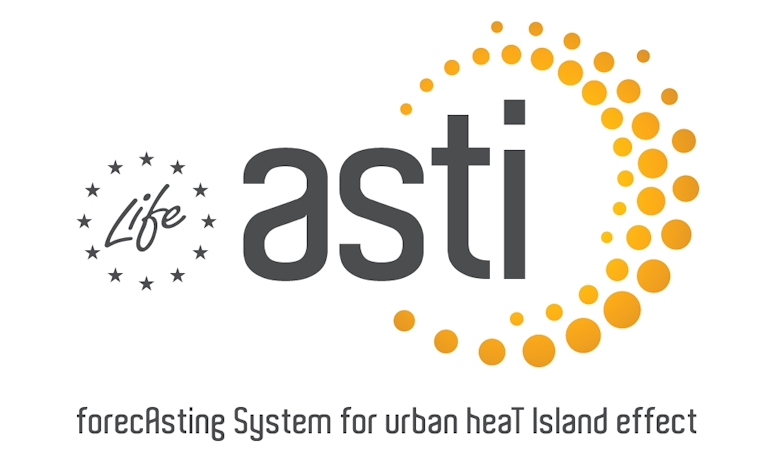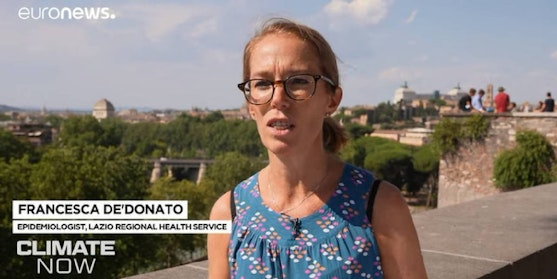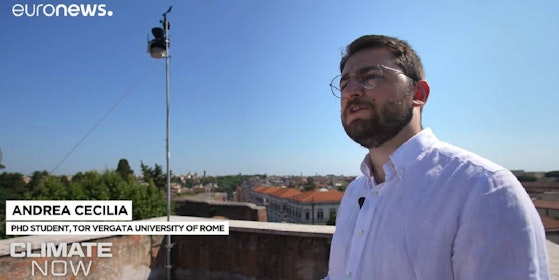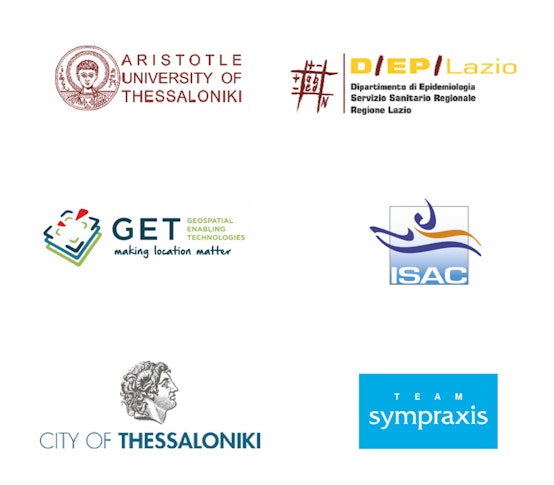| If you can't see this newsletter properly, please click the following link. View in Browser |
LIFE ASTI project on Euronews "Climate Now" With dangerously high temperatures hitting European cities more and more frequently, Euronews‘monthly climate change series “Climate Now”addresses the LIFE ASTI project, the urban heat island effect, and what can be done to protect the health of the most vulnerable people. Jeremy Wilks reports from Rome the latest efforts to better manage the health risks from heatwaves in European cities. Francesca de’Donato from the Lazio Regional Health Authority and Andrea Cecilia from the Tor Vergata University of Rome talk about all the recorded scientific data and the efforts being made under the LIFE ASTI project. You can watch the episode of “Climate Now” titled “Heatwave alert: can new technology help protect Europe’s most vulnerable?” HERE. |
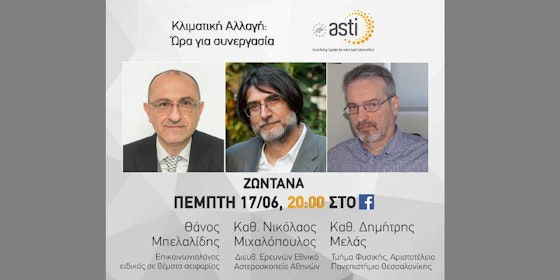 |
Discussing about climate crisis with professors Nikos Michalopoulos and Dimitris Melas The climate crisis is already here, showing its destructive face to the people and to our planet more and more often. The CLIMPACT Network, which puts science at the service of the state and society to tackle climate change, brings forward important collaborations that strive to achieve crucial changes. On June 17, LIFE ASTI's Thanos Belalidis discussed about the climate crisis, with leading scientists Professor Nikos Michalopoulos, Director of Research at the National Observatory of Athens, and Professor Dimitris Melas, Department of Physics of the Aristotle University of Thessaloniki. You can watch the interview, in Greek, HERE. |
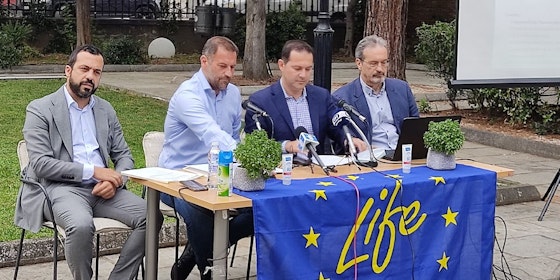 |
Press Conference of LIFE ASTI at Thessaloniki Municipal Gallery The Μunicipality of Thessaloniki has acquired a system that warns citizens against high temperatures. The system has been set up in the context of the Municipality's participation in the European Project LIFE ASTI. Through this platform, local thermal hot spots can be located, while detailed information about upcoming thermal phenomena can be provided as early as four days in advance. These results were presented at a Press Conference held at the courtyard of Thessaloniki's Municipal Gallery – Casa Bianca, by the Vice Mayor for Economic Affairs Mr M. Koupkas, the Vice Mayor for Technical Works Mr Efraim Kyrizidis, the Vice Mayor for Environmental Issues Mr Sokratis Dimitriadis, and the Professor of the Department of Physics of The Aristotle University of Thessaloniki Dr Dimitris Melas. Find the Press Release HERE. |
 |
LIFE ASTI's guided visit to an urban green space An educational visit by the LIFE ASTI project was carried out on July 6th at a technical work in progress by the Municipality of Thessaloniki. The work is titled “Landscaping of a green space at the junction of Papanastasiou and Voulgari street”. Funding for the expropriation of this space of three acres was provided by the Green Fund, while funding for the implementation is provided by NSRF – RDP of central Macedonia. This work is expected to significantly contribute to the improvement of the urban environment as well as the quality of life of the city’s residents by offsetting the negative effects the Urban Heat Island phenomenon has on people’s health. Furthermore, visitors will have the chance to physically exercise in the space. It goes without saying, that the park will be accessible to people with reduced mobility. You may find the relevant report HERE. |
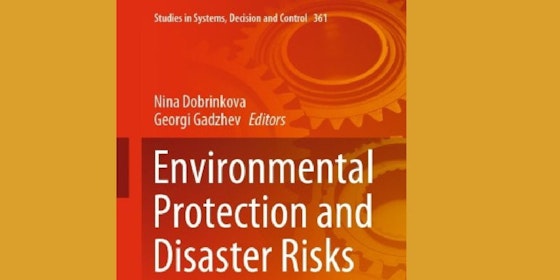 |
Scientific Study in Thessaloniki: "Urban Heat Island and Future Projections" The results of a scientific study, titled “Urban Heat Island and Future Projections: A Study in Thessaloniki, Greece” which was carried out within the framework of the LIFE ASTI project, is included in the Selected Papers from the 1st International Conference on Environmental Protection and Disaster Risks. The study analyses the characteristics of heat wave days in present and future, at a central urban region of Thessaloniki and a rural region around the city, in order to investigate the urban heat island effect under extreme heat. You can read the study HERE. |
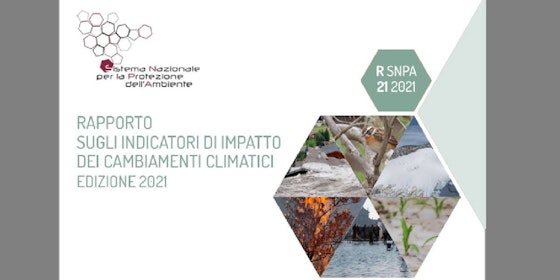 |
SNPA: Report on Climate Change Indicators, 2021 In the summer of 2021, the Italian SNPA (National System for Environmental Protection) published its report on climate change indicators (2021 edition), whose main goal is to systematise for the first time both the national and regional climate change impact indicators. The report is a detailed document describing adaptation and mitigation policies from international to regional level, past climate trend and future projections, observed climate change impacts, national indicators and regional pilot cases for a number of impact sectors, as well as national projects focusing on climate change impact. In particular, this last chapter describes both recently ended and ongoing national projects dealing with climate mitigation and adaptation practices and tools, including LIFE ASTI with specific regard to the urban heat island forecasting and health warning systems. You can read the SNPA 2021 Report HERE. |
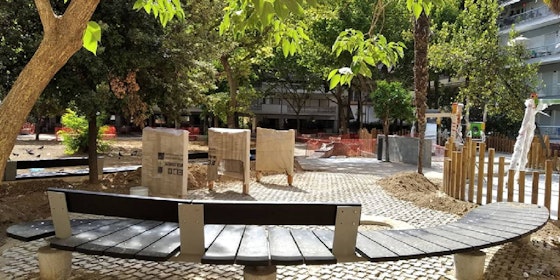 |
Two pilot projects for urban regeneration in Thessaloniki The Municipality of Thessaloniki is committed to designing and implementing pilot projects of urban regeneration based on the local bioclimatic characteristics, in order to adapt to climate change impacts. The projects are developed in two areas. The first one has been developed in the road junction Papanastasiou – Voulgari and aims to create a new green area in relevance with the neighbouring Nea Elvetia park. It contains a new water canal, beautiful colours, and scents from vegetation combined with the establishment of outdoor gymnastics equipment. The second one is located in Sarakatsanon square at the junction Botsari – Electra’s, and aims to create a new green area which will better cover the needs of the locals for recreation and relaxation, and which can accommodate various activities during the day by providing a new playground for kids. Read more info about the projects: Sarakatsanon square at the junction Botsari – Electra1 & Road junction Papanastasiou – Voulgari |
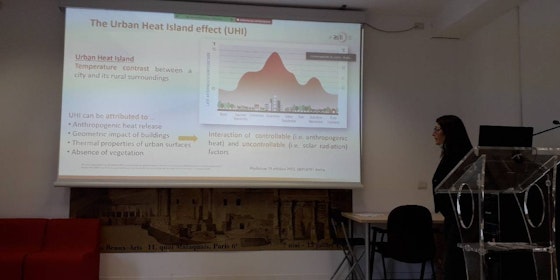 |
Second local workshop with stakeholders in Rome On the 19th of October, LIFE ASTI partners from DEPLAZIO and ISAC-CNR met with local public health and environmental stakeholders to present project results and future applications. Researchers and policy makers including environmental protection Institutes (ISPRA, ARPALAZIO), the Lazio Region and health representatives of the regional heat Plan, researchers from La Sapienza University, start-ups, and private companies (Meteotracker, Meteolazio, SERCO) were present. The first session was focused on presenting the results of the UHI monitoring campaign in Rome, the forecasting model, and heat warning systems as well as describing the web platform and mobile app. The second session was a round table discussion with stakeholders presenting their work and a group discussion of potential collaborations and future applications. You can find a post on the event HERE. |
| |
|
| The LIFE ASTI (Implementation of a forecAstingSystem for urban heaT Island effect for the development of urban adaptation strategies) project focuses on addressing the impact of the Urban Heat Island Effect (UHIE) on human mortality, by developing and evaluating a system of numerical models that will lead to the short-term forecasting and future projection of the UHIE phenomenon in two Mediterranean cities: Thessaloniki and Rome.The project is co-funded by the LIFE 2014-2020 Programme, with a 36-month implementation period. |
| | Project Partners
The LIFE ASTI partnership has established networks at the EU level, including Institutions, Organisations, Municipalities and other local/regional authorities. All partners have been involved in previous and current EU projects and are fully committed to the successful implementation of the Project.
|
| |
|
| If you don't wish to receive informative messages from the LIFE ASTI
Project please click UNSUBSCRIBE. |
| |
|
| |
